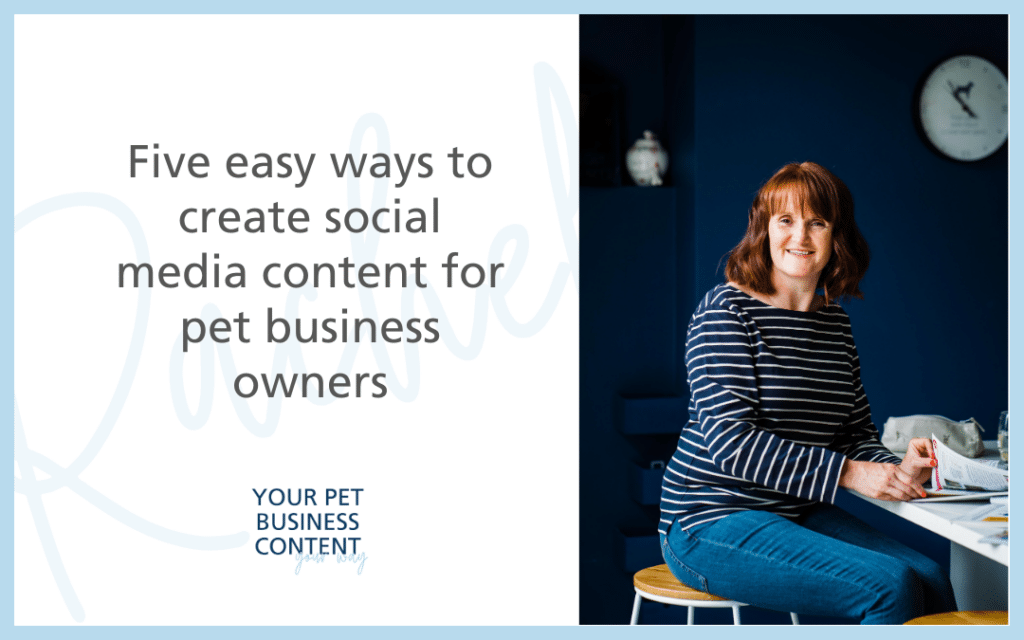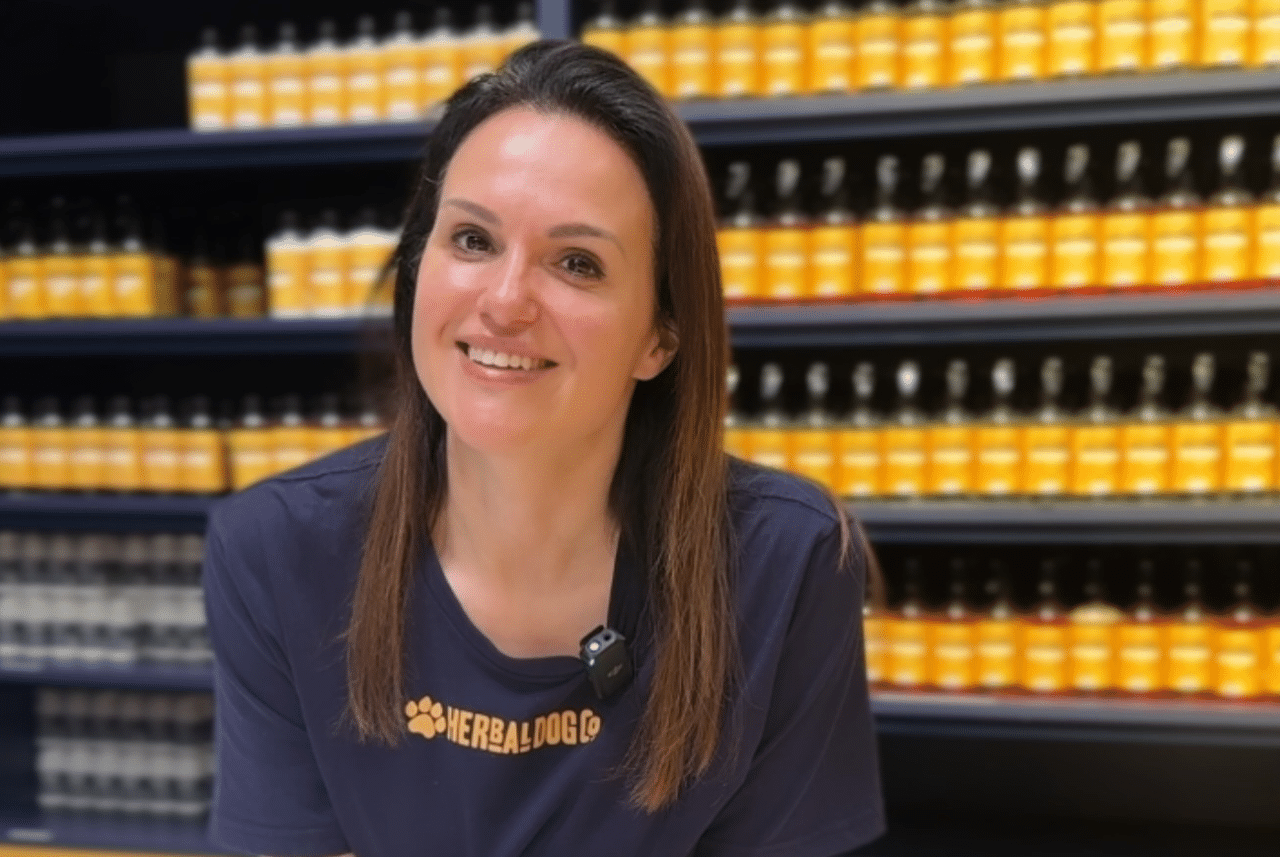Do you love creating content? Or is it one of the dreaded things that lingers on the bottom of your to-do list?
Whatever answer you give – I hear you. Because some days I’ll have a story, article, piece or content or press release to do and it writes itself.
Other days I can’t string a sentence together. I’ll faff around on social media, play with the dog, clean the house from top to bottom and do anything to avoid it.
I know I’m not alone, which is why I thought I’d write about the easy ways you can create content for your pet business.
1. Share your story
The first story you tell when you start your business should be your own. I spend a lot of time convincing people of this.
When it comes to making people know, like and trust us, the more personal information we share, the more likely it is that this will happen.
It can be tempting to hide behind your product and service, but if you want people to engage with you and ultimately buy from you, you have to put yourself out there.
So what is your story? What drives you to do what you do? Was it a life changing event? Or simply your pet coming into your life and changing it for the better?
No prizes for guessing this is my story and you can read it on my blog here.
When you share your story it sets you apart from the other people who might be doing something similar to you.
If you’re stuck, think about what you say when you meet someone new and they ask you about your business.
Be passionate, show that you care about what you do and so will the reader.
2. Tell a story
Things will happen in the day-to-day running of your business that make for great content.
The kind of things that people might talk about in the pub or that would cause debate on social media.
These can easily be turned into content and repurposed for your social media posts, newsletters and potentially generate media coverage.
Here’s an example. I met Marie Yates from Canine Perspective at a Purina event in June 2018.
She’s the founder of a social enterprise and works with survivors of sexual violence and rescue dogs.
Marie runs workshops where survivors and rescue dogs work together and you can read about them here.
In each session, she shares the story of the dog and how they came to be in rescue.
Then she helps them train the dog, teaching them cues such as ‘sit’ ‘stay’ and ‘paw’ helping increase the likelihood of them being re homed.
At the same time, the survivors learn about the science of recovery through the eyes of the dog, build resilience and learn about living in the moment.
Marie met someone who called her programme ‘controversial,’ and was a little taken aback so she posted on Facebook and blogged about it.
You can read it here www.canine-perspective.com/controversial-social-project/
See how she turned it into such a powerful blog post explaining exactly why she does what she does, who she helps, and what the outcomes are.
Marie did it in such a brilliant way and turned what could have been a very infuriating experience into a brilliant piece of content.
3. Share how you solved a problem
Think of this as being an extended testimonial. It’s a way to sell what you do without being salesy and the person demonstrating your expertise is your client.
It might be something that you find yourself doing regularly in your business. You might be a pet nutritionist who regularly deals with overweight dogs.
So create a piece of content around the problem with obesity in our pets including statistics from a credible organisation.
Talk about why you think this is and show your expertise, then explain the advice you give to owners and share helpful insight.
Ask one of your clients to give a testimonial about how you helped their pet and the impact this has had.
This only has to be a few lines. Hearing it in the owner’s words is so much more powerful. Use before and after images to show the difference too.
Finally, give a call to action to readers who might be concerned about their pet’s weight, so this might be them downloading a healthy weight chart or sending you an e mail.
Content like this is easy to do and a way to build trust in your business.
4. Share an interview
Talking to an expert in your industry, a client or a supplier can make for a nice, easy piece of content.
Plan your questions before. Think about what your readers or your customers would want to know, and try to make the interview as personal as possible.
By that, I mean be friendly and interested. Don’t be stuffy and corporate or you’ll end up with a boring piece of content no-one wants to read.
So if you’re a dog walker and you’re interviewing a trainer, think about what insight they can share to help your audience, but also share a little about them.
For example, Dominic Hodgson, author of Worry Free Walks, did a round of Facebook Live interviews to promote his book so I spoke to him for my pet blog.
If I broke down the interview, it was around 25 per cent about his personal story – he went from working for a tobacco company to setting up a dog walking business and by his own admission ‘couldn’t control a couple of chihuahuas.’
He shared his journey into becoming a dog trainer.
Then about 30 per cent was about the book and what readers could expect. I shared my own story of having an unruly dog, so that was about 10 per cent.
We had questions from listeners that made up another 25 per cent, then the final part was explaining a giveaway.
Try to mix things up as much as possible.
If you do a Facebook Live, you can get a transcript from rev.com for $1 a minute to turn it into a blog post too – this is a huge time saver!
5. Use a media diary
You know when you go on social media and see it’s #nationalpieweek or #loveyourpet day?
All these dates can be found in a media diary and they’re brilliant for filling up your social media content calendar and creating blog posts.
I’m a huge fan of my media planner and try to sit down with it and plan at least once a week. And if you’re stuck for things to write about there’s loads of ideas to inspire you.
Sometimes, thinking a little bit outside the box can work really well.
I did a post last year on Black Dog Syndrome – it’s where black dogs and cats are overlooked in rescues.
There’s a few reasons for this. People think it dates back to folklore where black animals were seen to be unlucky, but most recently it’s said to be because they don’t show up well on social media pics.
That’s pretty sad isn’t it? This is one of my highest performing posts and was shared more than 5000 times.
Be creative with your diary dates and try to do something out of the ordinary.
As a member of my Pets Get Visible community, each month you’re sent out a PDF with the key awareness days on so you can plan ahead.
Find out more in this post: Is my Pets Get Visible membership right for you?
Get 50% off your first month here.
Conclusion
When you’re a business owner there seems to be so many things you need to do it can get completely overwhelming.
Creating content is one of them but, done right, a blog that may take a few hours to do can prove valuable and help bring you customers for years to come.
So it is worth spending a little time on it.
If you found this post helpful, you might like to read:
27 ideas you can use any time for your pet business
How to generate content ideas for your pet business
Why creating content can be better than PR for your pet business
For regular tips on content and ways to promote your pet business, sign up to my e mail list here.





